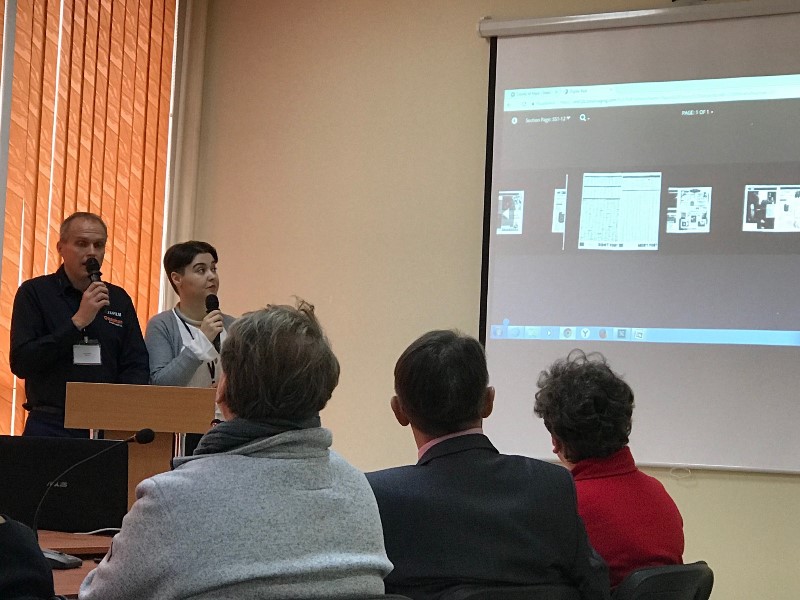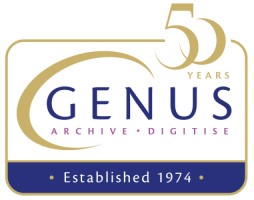On the 24th & 25th of October Paul Negus – Managing Director of Genus, attended the “Microfilming in the Digital Era” conference held at The Russian National Public Library for Science and Technology (GPNTB) Moscow, to present his speech entitled “Microfilm in 2017 -Back to the Future 2!”. The overall theme of the conference was to discuss and summarise the future of Microfilming with examples from both federal agencies and leading industry experts. Among the speakers were such authorities as The Russian Federal Archive Agency, The Federal State Unitary Enterprise & The Research Institute of Standardisation and Unification, the affiliated Tula Research Institute of Reprographics and “DIMI Center” – the exclusive Russian reseller for Genus and Fujifilm – and one of the organisers of the event.
During plenary meetings and roundtable discussions the speakers & attendees discussed the following:
- The current position of microfilming in Russia & abroad
- Modern technologies for creating insurance documentation funds, by using digital copies;
- Application features for the creation of insurance documentation funds in the industry, library and archive services.
- An overview of the current microfilming equipment and consumables available in the market;
 Opened by the Deputy Head of The Russian Archive Agency Mr. O. Naumov, the Head of GPNTB Mr. Y. Shrayberg, and the General Director of LLC “DIMI-CENTER” Mr. S. Timirgaliev. Over 80 people attended in person with a following 39 joining the online video conference and a further 36 on the second day.
Opened by the Deputy Head of The Russian Archive Agency Mr. O. Naumov, the Head of GPNTB Mr. Y. Shrayberg, and the General Director of LLC “DIMI-CENTER” Mr. S. Timirgaliev. Over 80 people attended in person with a following 39 joining the online video conference and a further 36 on the second day.
Presentations and speeches from the day included:
Mr. S. Timirgaliev – general director of LLC “DIMI-CENTER – Is there a future for microfilming?
Mr. I. Lyaschuk – head of the projects & Mr. K. Serookiy product-manager of LLC Philax – Modern technologies of digital data preservation
Mr. Y. Breslav. (LLC «NPP “Tasma”»). Modern state of production of silver halide photographic materials at LLC «NPP “Tasma”»
Mr. P. Zavalishin (affiliated Tula Research Institute of Reprographics). Modern insurance fund of documentation and digital technologies
Mr. B. Abramov (LLC “DIMI-CENTER”). Microfilming, electronic copies and Archive-writers (COM-systems), the comparison of technologies
Mr. Paul Negus (Genus, UK). Present-day experience of microfilming technologies for preservation of information worldwide
Mr. Alexander Sander (Zeutschel, Germany). Analogue and digital microfilming
Mr. Roman Schonfeld (MICROBOX, Germany) The future of microfilming from the producer’s point of view
Mr. Y. Belenkiy (LLC «ARGENTUM DIGITAL») Technologies of digital microfilming in Russia
This conference was an excellent opportunity for some of the big players in the microfilm industry to discuss where microfilm technology currently is and what type of equipment and solutions are available to microfilm users.
The article by Paul Negus is detailed here: Microfilm in 2017 – Back to the Future 2!
 Paul considers this document very much a starting point for creating a white paper on the current position of the microfilm industry in the next 6 months. He would warmly welcome input from other microfilm specialists and consultants. So please feel free to share your experiences of microfilm equipment, microfilm usage, current microfilm projects, microfilm standards and new microfilm technology. Then, with your permission, Paul will compile this information into a white paper that will be available to everybody for free distribution.
Paul considers this document very much a starting point for creating a white paper on the current position of the microfilm industry in the next 6 months. He would warmly welcome input from other microfilm specialists and consultants. So please feel free to share your experiences of microfilm equipment, microfilm usage, current microfilm projects, microfilm standards and new microfilm technology. Then, with your permission, Paul will compile this information into a white paper that will be available to everybody for free distribution.
Please leave your responses in the comments box below.




Comments are closed.